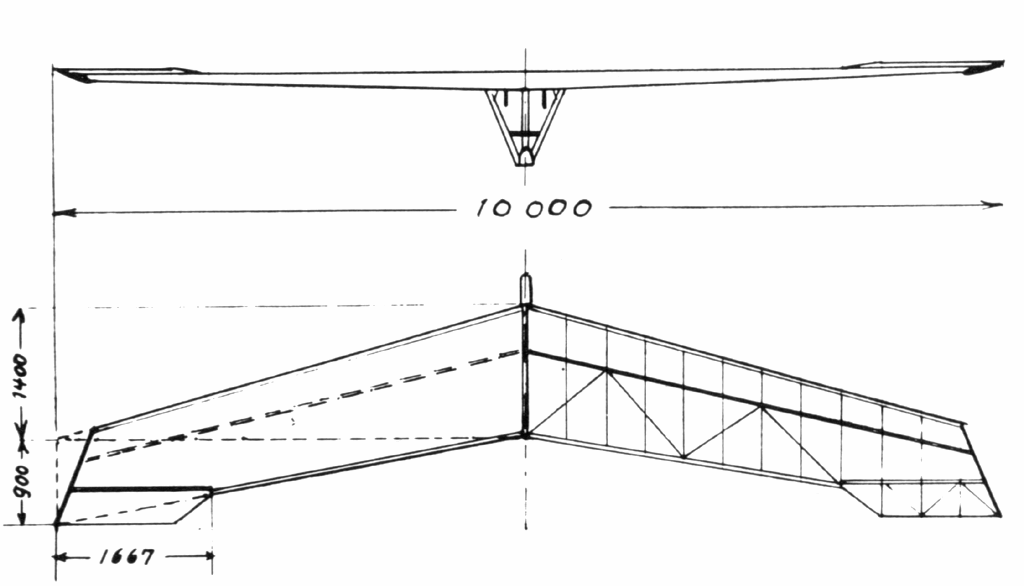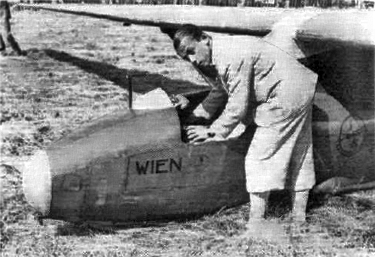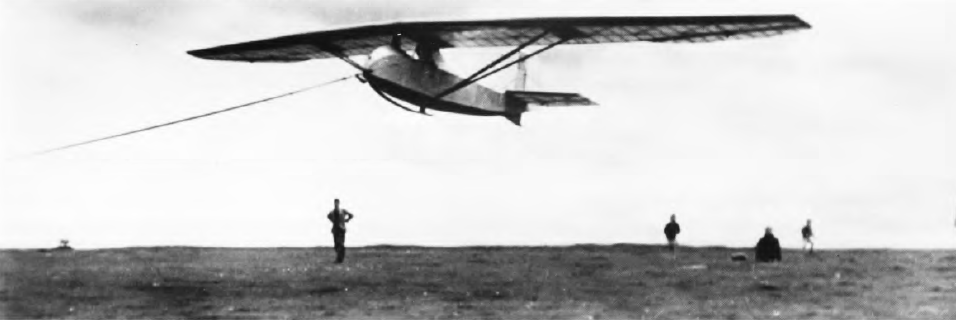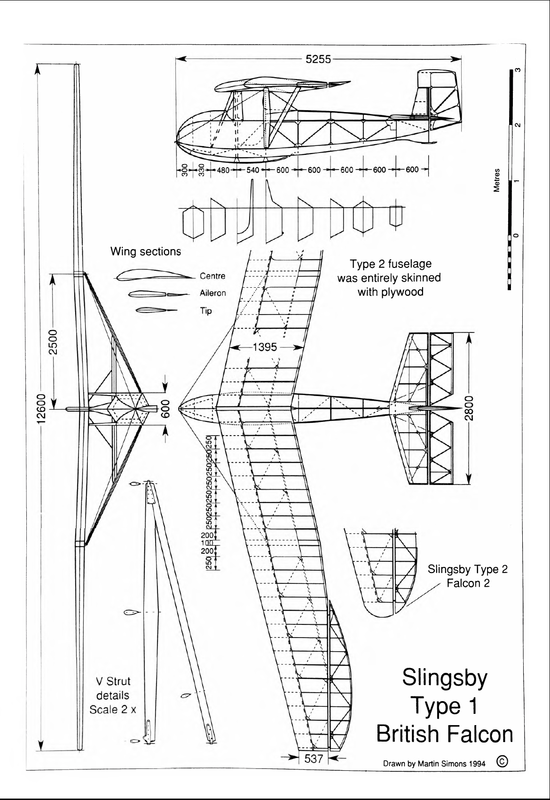Joe, I think the photo above is of Gottlob Espenlaub with one of his own designs from the early 1920s, the E1.

The hang glider on the left (#41) is, I believe, an Eapenlaub E1 flown by Peter Riedel at the 1924 Wasserkuppe contest.
Lippisch began his flying wing experiments by working with Gottlob and modifying the E1 into a swept-back, tailless flying wing, installing droop tips for better directional control. On Doug Bullard's Nurflugel site, these tips are referred to as "end plates" but they definitely appear to me as droop tips. I think the confusion may have arisen from the mislabeling of a diagram of the Storch (with end-plates) as an E2 - see
http://www.nurflugel.com/Nurflugel/Lippisch_Nurflugels/lippisch_nurflugels.html.

Note the large wheel for "safe splat." I think there is a trailing skid. Jim would approve.
Here you can see the droop tip on the far wing.

Alexander Lippisch is at the right. Gottlob Espenlaub is in the foreground.
The E2 flying wing before the droop tips.

The E2 evolved into the powered Storch later in the 1920s.

Also during the 1920s, Lippisch designed the Zogling primary glider, which is still used for training 90 years later.
.jpg)
In the later 1920s, he designed the Prufling for the Wasserkruppe contests. Someone wrote that hang gliders were "banned" from the competitions but I think what really happened is that they could no longer compete against the evolving, higher performance craft that Lippisch came out with on a yearly basis.

Lippisch designed the Wien in 1927. His ships out-performed all others and he becme to be known as the "father of German gliding."
In 1929 Lippisch designed the Falke (Falcon). Fred Slingsby licensed it for production in England. I think this is the one that got Slingsby Sailplanes going.









.jpg)



